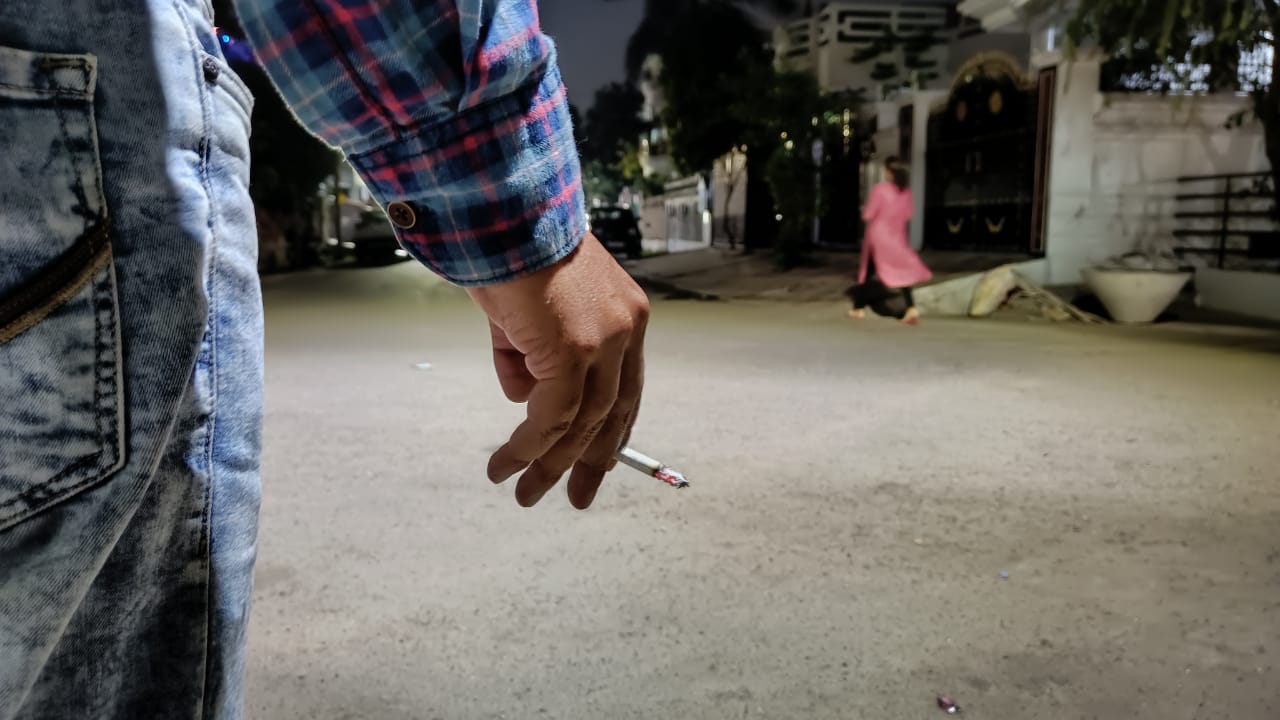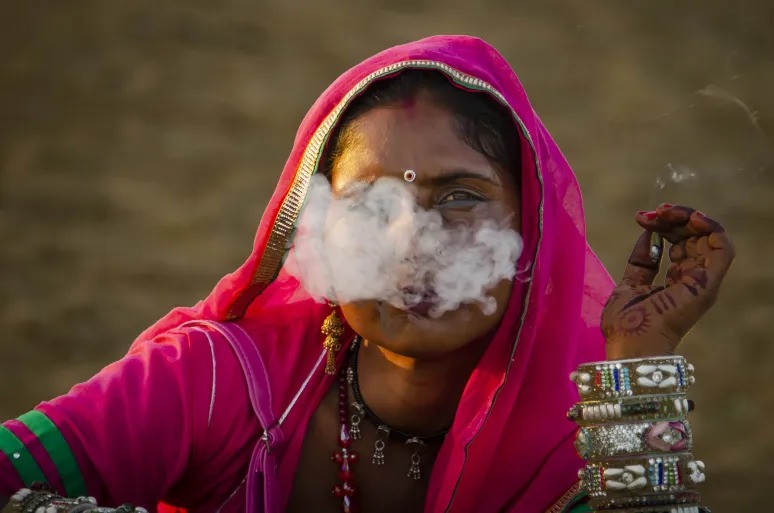Child rights body suggests raising legal age to buy tobacco from 18 to 21; experts demand stronger enforcement of existing laws
Priyank Kanoongo, the chairperson for National Commission for Protection of Child Rights said that the probability of a person remaining tobacco-free for the rest of their lives is higher if they are kept away from tobacco till the age of 21.


A report found that the age group 18-30 has the highest prevalence in the use of cigarettes, comprising 70 per cent of the total smokers. Photo By : Abhishek Verma
While addressing a webinar on tobacco use amongst the youth, Priyank Kanoongo, the chairperson of the National Commission for Protection of Child Rights (NCPCR) recently vouched for raising the minimum legal age to consume tobacco products from 18 to 21.
Kanoongo reportedly stated that it was scientifically established that if a person is kept away from tobacco till the age of 21, then the probability that they will remain tobacco-free for the rest of their lives is higher.
The child rights body chairperson said so while addressing a webinar titled ‘Strengthening Legal Framework for Protecting Youth from Tobacco’, that was organised by the National Law School of India (NLSUI) in Bangalore on October 21.
He also suggested that the Cigarettes and Other Tobacco Products (Prohibition of Advertisement and Regulation of Trade and Commerce, Production, Supply and Distribution) Act, commonly known as ‘COTPA 2003’ should be amended in order to ensure this.
“The sale of loose, single sticks of cigarettes should be banned by amending COTPA 2003 as this is crucial to protect youth from tobacco. Such measures have the potential to reduce the initiation of tobacco use among youngsters which could further push them to become regular smokers,” Kanoongo said.
COTPA was passed in 2003 to regulate tobacco products’ trade, supply, production, distribution, and advertisement. It restricted the sale of tobacco to minors and selling within a one-hundred-yard radius of schools or any other educational establishment. It highlighted the outline of the hazard advisory for all tobacco products and not just cigarettes as done by previous Acts.
‘Better enforcement of existing laws much needed’
Meanwhile, findings of a recent report titled, “Reflecting the Past, Shaping the Future” published by AF Development Care, a development research and consulting firm based in New Delhi revealed that even the existing laws to control tobacco consumption are not being enforced effectively.
The report informed that merely 52 per cent of the states were found to have tobacco monitoring mechanisms as per the monitoring report of COTPA. Despite a prohibition of smoking in public places by 15 states in India, fine collection and enforcement was only followed in 11. Also, just three states strictly follow violation of advertisement and promotion of tobacco, as per the report.
Sachi Satapathy, the Principal Investigator of the report and Director of AF Development Care told Gaon Connection that level of law enforcement and of retailers’ compliance with age-based laws is important, whether it is 18 or 21. “Our study shows that enforcement and retailers compliance is weak now, so it won’t make much change in the field,” he told Gaon Connection.

Calling for a complete revamp of tobacco control strategy Satapathy said, “In our study, we found that there is an increasing trend of tobacco use among rural women in India, particularly the Smokeless Tobacco (SLT). However, India does not have any strategy or plan to curb this trend. We need a complete revamp tobacco control strategy to bring substantial progress in our target. The reduction in the age limit may not help this issue, as field led compliance is extremely weak in India.”
He also added that the government must shift its focus towards rural areas and women, and all interventions need to be district-based rather than national since earlier policy measures were based on the assumption that tobacco consumption is more of a male than a female habit, which may no longer be valid in India.
‘Cigarette use most prevalent in 18-30 age group’
The report highlighted that people in the age group 18-30 have the highest prevalence in the use of cigarettes, comprising 70 per cent of the total smokers.
The report also found that in rural India, around nine per cent of adults send kids to buy tobacco products whereas in urban India, the same was true for 7.94 per cent of adult smokers. “This can affect the kid and there is a chance of tobacco initiation in the kid in the early stage itself. This also shows that the laws are not being followed by the shop owners, as they are not allowed to sell tobacco products to the less than 18 age categories,” the report stated.
The trend of sending kids to buy tobacco products, by parents for their own consumption, was highest in Uttar Pradesh (22.33 per cent) and Gujarat (15.42 per cent) whereas it was the lowest in Assam (0.65 per cent) and Karnataka (1 per cent), as per the report.

The report also analysed the trend of sending kids to buy tobacco was highest among the low-income category with 12.15 per cent and decreased with an increase in the income.
The study found that females tend to send kids to buy tobacco products more as compared to men. Around 18 per cent of women sent kids to buy tobacco products as compared to 5 per cent men.
The report highlighted that lobbying by tobacco producers also played a vital role in dilution or ineffective implementation of laws, loosening policies, and finding loopholes. “With major political parties accepting funds from major players like ITC limited, installing ITC members in government offices and using revenue as leverage to influence public policy, lobbying was also done to enforce tobacco regulation at the central level. This prevented states and local level governments from passing laws and provisions of their own towards more stringent and effective policies. This also allowed greater control of tobacco lobbyists over legislation,” the study highlighted.

